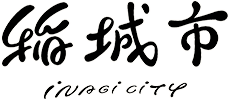Prevention of Nara Disease
Due to the confirmation of oak wilt in the city, we are implementing measures to prevent its rapid spread.
What is Nara-kare?
Nara dieback is a tree infectious disease that causes the death of oak species, including Quercus serrata and Quercus acutissima, mediated by the oak borer beetle (hereinafter referred to as "Kashinaga") and the Nara fungus. It particularly causes collective dieback in Mizunara and Konara, with a high mortality rate and a tendency for damage to spread to surrounding areas.
The oak borer is less likely to breed in oak species with a diameter of 10 centimeters or less, and breeding efficiency is said to be better in larger trees. In recent years, the lack of tree renewal in satoyama has led to the growth of large oaks, and the increase in forests and woodlands suitable for the breeding of oak borers has been cited as one of the factors causing nationwide damage.
Mechanism of Nara Dieback
From June to around July, new adult longhorn beetles will fly to healthy trees to lay their eggs. Many longhorn beetles will gather intensively due to the aggregation pheromones released by the males. Additionally, egg-laying will occur within the holes.
The oak fungus carried by the female enters the tree, causing the tree's water transport function to fail around July to September, and the leaves begin to wither as if they have turned red in autumn, rapidly wilting within 1 to 2 weeks (though there may be cases where they do not wither).
The larvae of the Kasinaga grow by feeding on yeasts cultivated within the tunnels, and in June of the following year, they fly to new healthy trees.
Characteristics of Nara dieback
The following are characteristics of Narakare.
- It includes oak species such as Mizunara and Konara, as well as evergreen oaks like Arakashi and Sudajii.
- From June to September, the leaves rapidly change color to reddish-brown and wither.
- There are many small holes with a diameter of 1.4 to 1.9 mm created by the Kashinaga.
- There is a large amount of frass near the base
Damage Situation in the City
In parks and green spaces within Inagi City, oak tree wilt was confirmed in August of Reiwa 2 (2020). Additionally, damage has been confirmed in privately owned forests, including the natural environment conservation area located south of Inagi Station and the area around Shiroyama Park.
In Inagi City, as a response to oak wilt, we are conducting tree felling mainly on damaged trees around park paths to ensure the safety of park users.
The status of tree felling due to oak wilt on city-managed land such as parks and green spaces (as of March, Reiwa 7) is as follows. Going forward, we will carry out the felling of damaged trees remaining around park paths and those located away from the paths.
- Parks and Green Spaces
Inagi Central Park, Shiroyama Park, Omaru Park and others 546 trees - Other Topics
Inagi Fureai Forest 92 trees
Total 638 units
Methods for Preventing Nara Disease
As measures for trees affected by Nara dieback, there are broadly the following methods.
- How to fell trees and dispose of them properly
- Method of injecting insecticide while keeping the tree standing
- Method of covering trees with sheets, etc. to prevent Kashinaga escape
In city-managed areas such as parks and green spaces where there is a high number of visitors, it is not appropriate to leave dead trees that pose a high risk of falling, so the basic approach is to cut them down and dispose of them properly.
Please let us know your feedback on how to make our website better.
Inquiries about this page
Inagi City Department of Urban Environmental Development, Greenery & Environment Division
2111 Higashi-Naganuma, Inagi City, Tokyo 206-8601
Phone number: 042-378-2111 Fax number: 042-378-9719
Contact the Greenery and Environment Division, Urban Environment Management Department, Inagi City



















